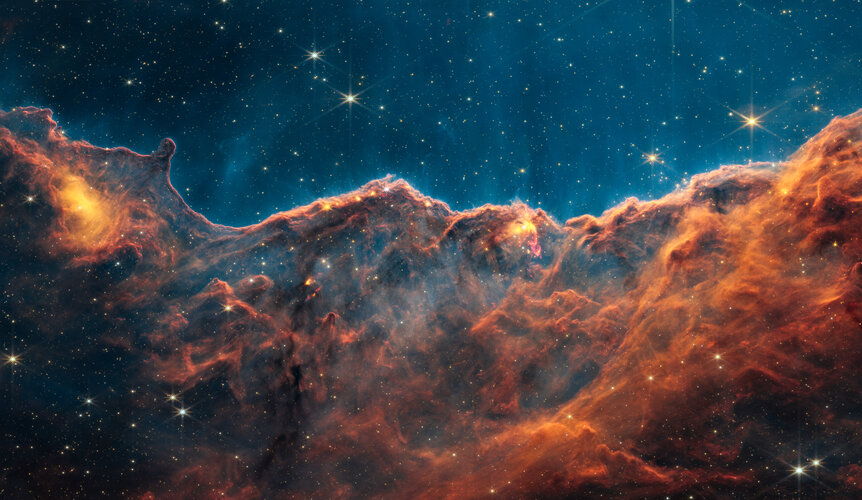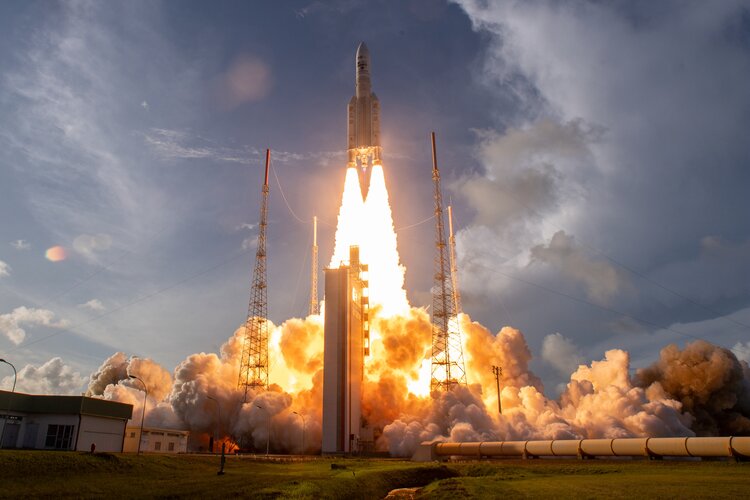
Copernical Team
Week in images: 12-16 December 2022

Week in images: 12-16 December 2022
Discover our week through the lens
ESA Highlights 2022
 Video:
00:07:33
Video:
00:07:33
2022 was a year of many ‘firsts’ for space in Europe, seeing the first European female ISS commander, the launch of the first Vega-C rocket, Solar Orbiter’s first close encounter with our home star, the launch of the first Artemis mission working to bring humans back to the Moon, and first images from the James Webb Space Telescope.
Let’s take a look at the highlights and accomplishments of the European Space Agency during 2022.
Advanced Air Mobility makes travel more accessible
 Edwards AFB CA (SPX) Dec 15, 2022
Imagine requesting an air taxi by app, like you do now with Uber or Lyft, to travel to your local airport - you could be soaring above road traffic and arrive much faster than driving.
Aviation industry creatives are already designing rideshare air services between home and the airport. New remotely piloted and autonomous aircraft will make air travel mor
Edwards AFB CA (SPX) Dec 15, 2022
Imagine requesting an air taxi by app, like you do now with Uber or Lyft, to travel to your local airport - you could be soaring above road traffic and arrive much faster than driving.
Aviation industry creatives are already designing rideshare air services between home and the airport. New remotely piloted and autonomous aircraft will make air travel mor ZEP-RE and Planet collaborate on drought insurance program in Africa
 Planet Labs PBC (NYSE: PL), a leading provider of daily data and insights about Earth, have announced a new contract with ZEP-RE, a reinsurance company based in Nairobi, Kenya, to leverage Planet's Basemaps products to enhance drought risk protection in the Horn of Africa (HOA).
ZEP-RE aims to leverage PlanetScope 3-5 meter resolution imagery through Planet's analysis-ready, Surface Reflec
Planet Labs PBC (NYSE: PL), a leading provider of daily data and insights about Earth, have announced a new contract with ZEP-RE, a reinsurance company based in Nairobi, Kenya, to leverage Planet's Basemaps products to enhance drought risk protection in the Horn of Africa (HOA).
ZEP-RE aims to leverage PlanetScope 3-5 meter resolution imagery through Planet's analysis-ready, Surface Reflec Airbus delivers first Sentinel-4 air-monitoring instrument to ESA
 Airbus Defence and Space has successfully delivered the first Sentinel-4/UVN (Ultraviolet, Visible and Near Infra-Red) multispectral instrument flight model to the European Space Agency (ESA). It will be integrated onto the Meteosat Third Generation Sounder (MTG-S1) satellite next year.
The instrument will continuously monitor key air quality trace gases and aerosols from geostationary orb
Airbus Defence and Space has successfully delivered the first Sentinel-4/UVN (Ultraviolet, Visible and Near Infra-Red) multispectral instrument flight model to the European Space Agency (ESA). It will be integrated onto the Meteosat Third Generation Sounder (MTG-S1) satellite next year.
The instrument will continuously monitor key air quality trace gases and aerosols from geostationary orb Airbus delivers MicroCarb instrument, the first European mission to measure atmospheric CO2
 A special passenger crossed under the Channel this week: the MicroCarb instrument, en-route to be integrated with its satellite platform at RAL Space (Rutherford Appleton Laboratory) in Oxfordshire, England.
MicroCarb is a small satellite designed to map sources and sinks of carbon dioxide (CO2)-the most important greenhouse gas - on a global scale, to better understand the impact of CO2 p
A special passenger crossed under the Channel this week: the MicroCarb instrument, en-route to be integrated with its satellite platform at RAL Space (Rutherford Appleton Laboratory) in Oxfordshire, England.
MicroCarb is a small satellite designed to map sources and sinks of carbon dioxide (CO2)-the most important greenhouse gas - on a global scale, to better understand the impact of CO2 p Precise solar observations fed millions in ancient Mexico
 Without clocks or modern tools, ancient Mexicans watched the sun to maintain a farming calendar that precisely tracked seasons and even adjusted for leap years.
Before the Spanish arrival in 1519, the Basin of Mexico's agricultural system fed a population that was extraordinarily large for the time. Whereas Seville, the largest urban center in Spain, had a population of fewer than 50,000,
Without clocks or modern tools, ancient Mexicans watched the sun to maintain a farming calendar that precisely tracked seasons and even adjusted for leap years.
Before the Spanish arrival in 1519, the Basin of Mexico's agricultural system fed a population that was extraordinarily large for the time. Whereas Seville, the largest urban center in Spain, had a population of fewer than 50,000, Water-tracking SWOT satellite encapsulated in rocket payload fairing
 The international Surface Water and Ocean Topography mission is one step closer to launching so it can track water on more than 90% of Earth's surface.
The SWOT satellite, or the Surface Water and Ocean Topography mission, is now encapsulated in its payload fairing in preparation for launch. Technicians at the SpaceX processing facility at Vandenberg Space Force Base in California complete
The international Surface Water and Ocean Topography mission is one step closer to launching so it can track water on more than 90% of Earth's surface.
The SWOT satellite, or the Surface Water and Ocean Topography mission, is now encapsulated in its payload fairing in preparation for launch. Technicians at the SpaceX processing facility at Vandenberg Space Force Base in California complete MetTel Labs deploys VMware SD-WAN over Starlink
 MetTel reports that its Customer Innovation Labs, the research and development unit of MetTel, has deployed its Software-Defined Wide Area Network (SD-WAN) service using the VMware SD-WAN solution over SpaceX's Starlink satellite service.
These technologies far outpace the growth of the overall IT market which Gartner predicts at 5.1% year-over-year in 2023. According to the 2022 Gartner M
MetTel reports that its Customer Innovation Labs, the research and development unit of MetTel, has deployed its Software-Defined Wide Area Network (SD-WAN) service using the VMware SD-WAN solution over SpaceX's Starlink satellite service.
These technologies far outpace the growth of the overall IT market which Gartner predicts at 5.1% year-over-year in 2023. According to the 2022 Gartner M First Images Released From NOAA-21 VIIRS Instrument
 Bright blue water in the Caribbean Sea and smog in Northern India appear in the first global image produced with data from NOAA-21's VIIRS instrument.
The Visible Infrared Imaging Radiometer Suite (VIIRS) instrument on NOAA-21 began collecting Earth science data on Dec. 5 as the satellite passed over the East Coast of the United States. Data for the global image was collected over a period
Bright blue water in the Caribbean Sea and smog in Northern India appear in the first global image produced with data from NOAA-21's VIIRS instrument.
The Visible Infrared Imaging Radiometer Suite (VIIRS) instrument on NOAA-21 began collecting Earth science data on Dec. 5 as the satellite passed over the East Coast of the United States. Data for the global image was collected over a period 































